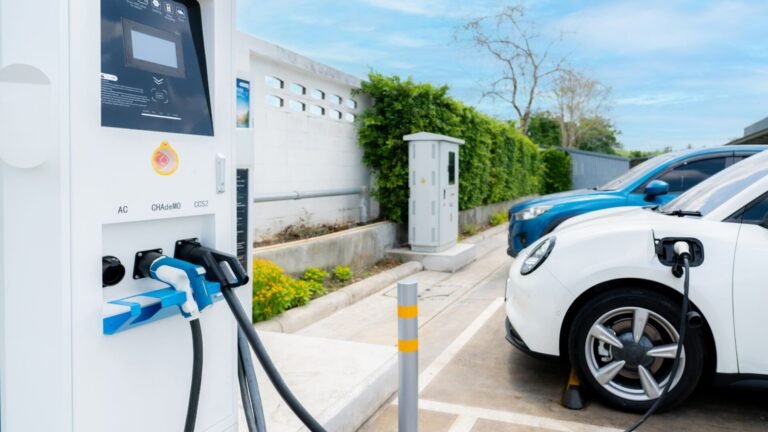As the world transitions towards sustainable energy sources, the future of portable solar energy looks brighter than ever.
With advancements in technology, increasing environmental awareness, and the push for renewable energy solutions, portable solar power systems are poised to revolutionize how we harness energy on the go.
The growing demand for eco-friendly alternatives and the continuous innovations in solar technology are setting the stage for unprecedented changes in how portable solar energy is utilized.
In this blog, we’ll explore the latest innovations, upcoming trends, and the potential impact of portable solar energy on various sectors, highlighting the transformative potential of this green technology.
1. Advancements in Solar Panel Efficiency
One of the key drivers in the future of portable solar energy is the continuous improvement in solar panel efficiency.
Traditional silicon-based panels are being enhanced with new materials and technologies to capture more sunlight and convert it into electricity more effectively.
Perovskite solar cells, for example, have shown remarkable efficiency rates and are flexible, lightweight, and less expensive to produce.
Additionally, tandem solar cells, which layer different types of photovoltaic materials, are pushing efficiency boundaries even further.
These advancements mean that portable solar panels can generate more power from smaller surfaces, making them ideal for a wide range of applications, from camping gear to emergency backup systems.
With the ongoing research and development in nanotechnology and quantum dot solar cells, we can expect even more significant leaps in efficiency and affordability in the near future.
2. Integration with Smart Technology
The future of portable solar energy is also closely tied to the integration of smart technology. Modern portable solar systems are increasingly being equipped with smart features that allow for better energy management and monitoring.
Through apps and connected devices, users can track their energy production, consumption, and battery status in real-time.
This level of control ensures that portable solar energy systems are used efficiently, maximizing their potential and prolonging their lifespan.
Smart inverters and energy management systems can automatically optimize the flow of energy, switching between solar, battery, and grid power as needed.
This not only enhances the user experience but also contributes to greater energy savings and sustainability.
3. Development of Solar-Powered Gadgets
Another exciting trend in the future of portable solar energy is the development of solar-powered gadgets.
From solar backpacks that charge your devices on the go to portable solar generators that can power entire campsites, these innovations are making renewable energy more accessible and convenient.
Solar-powered chargers for phones, tablets, and laptops are becoming increasingly popular, providing an eco-friendly alternative to traditional power sources.
The advancement in miniaturized solar cells is also leading to the creation of solar-powered wearables, such as watches and fitness trackers, which harness energy from both natural and artificial light sources.
These gadgets not only reduce our dependency on conventional power but also promote a lifestyle that is in harmony with nature.
4. Lightweight and Flexible Solar Panels
The future of portable solar energy will see the widespread use of lightweight and flexible solar panels. These panels can be easily integrated into various products, including clothing, tents, and vehicles.
The flexibility of these panels allows for creative applications, enabling solar energy to be harnessed in ways that were previously unimaginable.
This versatility will significantly expand the use cases for portable solar energy, making it an integral part of everyday life.
Innovations in materials science are leading to the development of ultra-thin solar films that can be applied to virtually any surface, transforming windows, walls, and even vehicles into sources of clean energy.
5. Enhanced Battery Storage Solutions
Battery storage technology is another critical aspect of the future of portable solar energy. As solar panels become more efficient, the need for effective energy storage solutions grows.
Innovations in battery technology, such as solid-state batteries and lithium-sulfur batteries, promise higher energy densities, longer life cycles, and faster charging times.
These advancements will ensure that portable solar energy systems can store more power and deliver it when needed, even during periods of low sunlight.
Additionally, the development of hybrid energy storage systems that combine batteries with supercapacitors offers a promising solution for delivering both high energy density and rapid discharge capabilities, ensuring a steady and reliable power supply.
6. Environmental and Economic Benefits
The future of portable solar energy offers significant environmental and economic benefits. By reducing reliance on fossil fuels and decreasing greenhouse gas emissions, portable solar energy contributes to a cleaner and healthier planet.
Additionally, as the cost of solar technology continues to decline, more people and businesses can afford to invest in portable solar solutions, leading to widespread adoption and greater energy independence.
The lower operational costs associated with solar energy also make it an attractive option for remote and off-grid communities, providing them with a sustainable and cost-effective power source.
7. Government Support and Incentives
Government policies and incentives will play a crucial role in shaping the future of portable solar energy. Many countries are implementing measures to promote renewable energy adoption, including tax credits, subsidies, and grants for solar energy projects.
These initiatives will help drive innovation and make portable solar energy more accessible to the general public.
In addition to financial incentives, governments are also investing in research and development programs to advance solar technology and infrastructure, ensuring a robust and resilient energy ecosystem.
8. Potential Impact on Various Sectors
The future of portable solar energy will have a profound impact on various sectors, including:
- Emergency Response and Disaster Relief: Portable solar systems can provide reliable power in remote or disaster-stricken areas, supporting emergency response efforts and critical communication.
- Agriculture: Farmers can use portable solar energy to power irrigation systems, electric fences, and other essential equipment, reducing their operational costs and carbon footprint.
- Travel and Tourism: Portable solar panels can enhance the outdoor experience for travelers, providing a sustainable way to power their gadgets and appliances while off-grid.
- Military and Defense: Portable solar energy can be used to power equipment and communication devices in the field, offering a reliable and stealthy energy source.
Conclusion
The future of portable solar energy is undeniably promising, with numerous advancements and innovations on the horizon.
As technology continues to evolve, portable solar systems will become more efficient, versatile, and accessible, transforming how we harness and utilize renewable energy.
At Tamesol, we are committed to staying at the forefront of these developments, providing cutting-edge portable solar solutions that meet the needs of our customers and contribute to a sustainable future.
Explore our range of products to discover how we can help you harness the power of the sun, anywhere and anytime.





